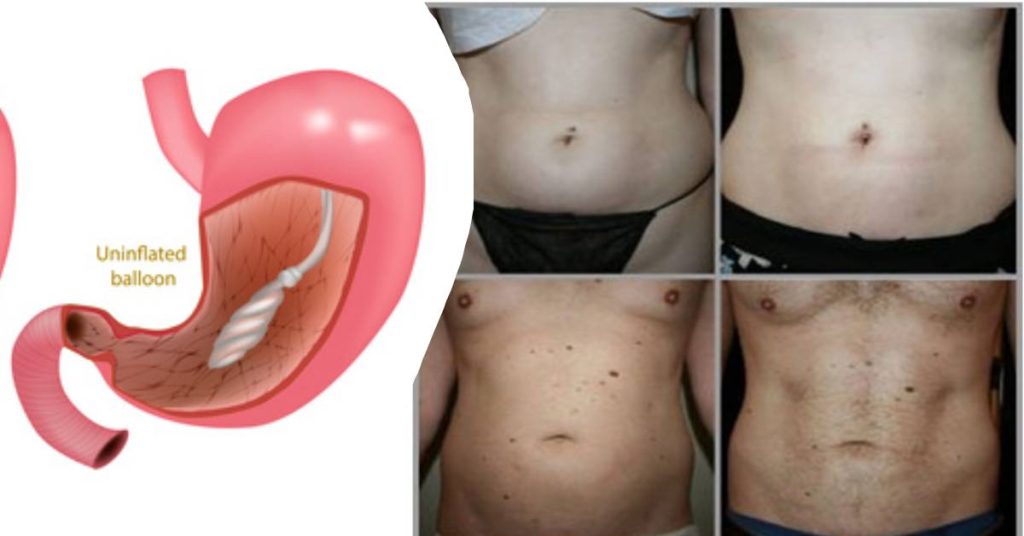You are not the only person in the world searching through the internet about Non Surgical Weight Loss Procedures in order to find a solution to obesity problems. Don’t worry we got you covered. Within this article, we have discussed about various Non Surgical Weight Loss Procedures, the advantages of choosing weight loss surgery procedures, and how they can benefit you.
Let us walk you through your options…
Table of contents
MORE keyboard_double_arrow_down LESS keyboard_double_arrow_up
If you are a person who seeks Non surgical procedures to gain weight loss,
The journey toward weight loss is a road filled with twists and turns. Imagine millions of people worldwide, each fighting their own battle against obesity. This isn’t just about vanity or fitting into societal norms; it’s a fight for health, for longevity.
Obesity doesn’t just carry weight. It brings along friends –
- Heart disease,
- Diabetes,
- Hypertension.
These conditions don’t just threaten the quality of life, they threaten life itself.
But here’s the twist – losing weight isn’t as straightforward as eating less and moving more. It’s about breaking free from years of habits, from the emotional comfort food provides. It’s a battle against the ads that bombard us with images of fast food and the societal pressures that make unhealthy choices all too easy.
Yet, for many, the path of traditional weight loss is blocked by the shadow of surgery.
Many people wish to avoid the surgery due to the fear of,
- Going under the knife,
- Complications,
- A recovery that stretches on for weeks or months.
They find themselves cycling through diets that promise much but deliver little, their motivation waning like the phases of the moon.
Plus, there are some cases where surgery is not an option due to various circumstances as well.
But what if there was another way? Yes, there is. Non Surgical Weight Loss Procedures are one such solution.
Keep reading you will find them eventually.
What are Non Surgical Weight Loss Procedures?
Non-surgical weight loss procedures are medical interventions designed to help individuals lose weight without the need for invasive surgery.
These procedures typically involve techniques that are minimally invasive and don’t require major incisions or anesthesia. Plus, they are often considered for people with a body mass index (BMI) of 30-40 (obese) or 35-55 (severely obese) and who haven’t been successful with other traditional methods like diet and exercise alone.
Non-surgical weight loss procedures have emerged from the convergence of medical advancements and a deepening understanding of obesity. They represent a less invasive, equally effective alternative to traditional weight loss surgery.
But what makes them stand out?
- Accessibility: Unlike surgery, these procedures often require minimal downtime. Imagine starting a journey to a healthier you and being able to continue with your life almost immediately.
- Safety: With no incisions, the risk of complications drops significantly. This means less worry and more focus on the journey ahead.
- Effectiveness: These procedures aren’t just a quick fix but a starting point for transformation. They work by addressing the core issues of obesity and helping to control hunger and portion sizes.
These options include the Orbera Balloon, a device inserted into the stomach to help you feel fuller with less food, and Endoscopic Sleeve Gastroplasty (ESG), which reshapes your stomach without external incisions. Both procedures are designed to kickstart weight loss in a significant, yet non-invasive way.
Is it possible to lose extreme weight without surgery?
We can divide the answer to this question into 3 parts depending on time.
In the past, when extreme weight lose without surgery was the only way possible,
Let’s step back in time to when weight loss was a straightforward yet challenging endeavor. Diet and exercise stood as the pillars of weight management, universally accepted and promoted.
Yet, as we ventured deeper, it became evident that these methods, though effective for some, were not a one-size-fits-all solution. Individuals with extreme weight(significant weight) to lose found themselves at a standstill, their efforts often yielding minimal results. It was a time of growing frustration, where the journey towards health seemed endlessly out of reach.
When aiming to reduce weight, the typical suggestion for most individuals is a weight reduction of 1–2 pounds each week. However, there are instances where individuals dealing with obesity may require a swifter weight loss, particularly in anticipation of weight loss surgery.
Rapid weight loss in the absence of surgery can be both safe and efficient under medical supervision. Nonetheless, trying extreme weight loss procedures without taking guidance from a healthcare professional or under the supervision of a doctor is generally deemed unsafe for the majority.
If you intend to pursue weight loss through adjustments in diet or lifestyle, consulting a physician is advisable. This ensures you receive the necessary support to pursue weight loss safely.
When Surgery was introduced to lose extreme weight,
The horizon shifted with the advent of surgical weight loss options, such as
- Gastric Bypass
- Sleeve Gastrectomy.
These procedures offered a ray of hope, a shortcut through the storm. Yet, this hope was not untainted. The invasive nature of the surgery, the risk of complications, and the daunting prospect of a long recovery time cast a shadow over its promise.
It was a solution, yes, but one that came with its own set of challenges and fears.
By the time when new Non Surgical Weight Loss Procedures were introduced,
People who were struggling to lose extreme weight found themselves presented with innovative options. These procedures, designed to offer effective weight loss solutions without invasive surgery, marked a significant advancement in the field of obesity management. They are technically known as Non Surgical Weight Loss Procedures in general.
For many, these alternatives represented a promising opportunity to address weight concerns without the risks associated with surgical interventions. As these procedures gained traction within the medical community, individuals grappling with obesity began exploring them as potential solutions to their weight loss challenges.
The introduction of these non-surgical options sparked considerable interest and discussion among healthcare professionals and patients alike, paving the way for a new era in the approach to weight management.
What are the best nonsurgical weight loss procedures available in the world in 2024?
Then, as if dawn broke on the horizon, non-surgical weight loss procedures emerged, heralding a revolution in the approach to shedding pounds. This new era was marked by the introduction of innovative methods such as the Intragastric balloon, Endoscopic Sleeve Gastroplasty (ESG), and AspireAssist.
These procedures offered a middle ground that was previously uncharted, a blend of effectiveness and safety that surgical options couldn’t match. Let us explore them further.
1. Intragastric balloon:
Intragastric balloons are balloon-like devices inserted into the stomach and filled with either liquid or air to reduce the stomach space.
Imagine a soft silicone balloon, gently placed into the stomach through a simple and non-invasive procedure. Once in place, it’s filled with saline, occupying space in the stomach and significantly reducing the amount of food it can hold. As a result, you feel your stomach is been filled fuller faster and longer, making portion control much more manageable.
There are two main types of intragastric balloons available:
- Liquid-filled: These balloons are filled with liquid after insertion into the stomach. Orbera, (FDA-approved in 2015) is the predominant liquid-filled intragastric balloon that is commonly used for this procedure.
- Air-filled: These balloons are expanded with air once inserted into the stomach. Obalon, FDA-approved in 2016, follows Orbera as the leading air-filled intragastric balloon that is commonly used for this procedure.
The insertion of intragastric balloons typically occurs through the esophagus via a noninvasive, nonsurgical procedure known as endoscopy.
What is Orbera Balloon??
The Orbera Balloon is a non-surgical weight-loss intervention utilizing a soft silicone balloon to occupy space within the stomach, thereby restricting the amount of food an individual can consume at once.
How Does Orbera Balloon Work for Weight Loss?
The Orbera Balloon works for weight loss through a straightforward procedure typically lasting 20 to 30 minutes. First, the medical team inserts a thin, deflated Orbera balloon into the patient’s stomach using an endoscope while the patient is mildly sedated. Then, they fill the balloon with saline solution until it expands to roughly the size of a grapefruit.
Once in place, the balloon occupies space in the stomach, inducing a sensation of fullness and reducing the frequency of hunger pangs. Additionally, it imposes a limitation on the quantity of food that can be consumed in a single sitting. Notably, this procedure does not necessitate a hospital stay and entails only a brief recovery period of approximately three days.
How Much Weight Can I Lose Using the Orbera Balloon System?
The Orbera Balloon System can effectively address key challenges in weight loss, such as managing hunger and portion sizes.
However, the amount of weight you can lose depends on various factors, including
- Your dietary choices,
- Level of physical activity,
- Adherence to the program.
You may required to keep taking a healthy diet and practice a regular exercise regimen for at least six months after the balloon is removed, as it is crucial for maintaining weight loss and preventing regain. It’s because transitioning to a healthier lifestyle can contribute to long-term success. Based on patient testimonials, weight loss results of 33 to 92 pounds within a six-month period have been reported.
2. Endoscopic Sleeve Gastroplasty (ESG):
Endoscopic Sleeve Gastroplasty (ESG) is a non-surgical weight loss procedure that involves using an endoscope to access the stomach via the throat.
During the procedure, the size of the stomach is modified into a banana-shaped pouch by placing 7 to 12 sutures. This innovative approach offers an effective weight loss solution for individuals with a BMI over 30, with studies demonstrating significant improvements in health outcomes.
The reduction in stomach size achieved through ESG aids in portion control and prolongs the feeling of fullness, contributing to weight loss. Typically lasting between 30 to 45 minutes, the procedure does not require hospitalization.
ESG diminishes stomach capacity by approximately 70%, resulting in outcomes comparable to those of a surgical sleeve gastrectomy but without the need for incisions.
How Does ESG Work for Weight Loss?
Endoscopic Sleeve Gastroplasty (ESG) works for weight loss by reducing the size of the stomach, thereby limiting the amount of food a person can consume during a single meal. This restriction in stomach capacity helps control portion sizes and prolongs the sensation of fullness, as food takes longer to digest in the smaller stomach.
Following the procedure, patients adhere to a prescribed diet plan designed to facilitate adjustment to the new stomach size.
Within the initial three months post-procedure, patients typically experience weight loss ranging from 10% to 13% of their total body weight. This encouraging progress often motivates individuals to maintain their dietary and exercise routines.
Recovery time is usually about a week, allowing patients to swiftly resume their regular activities. Moreover, patients can reintegrate exercise or physical activity into their routine sooner compared to recovery after weight loss surgery.
3. AspireAssist
AspireAssist is a non-surgical weight loss device sanctioned by the FDA in 2016 to aid individuals dealing with obesity in their weight loss journey. Through this device, a tube extends from the interior to the exterior of the stomach, enabling the extraction of a segment of stomach contents post-meal.
This action results in a reduction of calorie intake by approximately 30%. As with numerous other non-surgical weight loss techniques, the insertion of AspireAssist directly into the stomach is facilitated by employing an endoscope.
Beyond Non Surgical Weight Loss Procedures: A Lifestyle Change
The true essence of weight loss extends far beyond the procedural. It lies in the lifestyle changes that these procedures facilitate. Adopting a balanced diet, committing to regular exercise, and making conscious choices become the pillars of a new life.
These Non Surgical Weight Loss Procedures are not standalone solutions but tools that empower individuals to take control of their health. The journey to weight loss is a comprehensive transformation that encompasses mind, body, and spirit.
The path illuminated by these non-surgical procedures is one of hope and renewal. It offers a promising alternative for those seeking to overcome the challenges of obesity without undergoing surgery.
Debunking Myths: The Truth About Non-Surgical Weight Loss
The landscape of non-surgical weight loss is often obscured by a veil of myths. One common belief is that these procedures are merely a band-aid solution, offering only short-term benefits.
However, this couldn’t be further from the truth. When we peel back the layers, we find that non-surgical weight loss procedures, like the Orbera Balloon and Endoscopic Sleeve Gastroplasty (ESG), are not standalone interventions. Instead, they are part of a comprehensive approach to weight management.
Myth 1: Non-Surgical Procedures Are Ineffective:
- Truth: These procedures have been scientifically proven to facilitate significant weight loss. They work by physically altering the stomach’s capacity, which, in turn, helps individuals reduce food intake and feel full sooner.
Myth 2: The Results Are Only Temporary:
- Truth: While the physical modifications provided by the procedures are temporary, the lifestyle changes they initiate can lead to lasting weight loss and health improvements. The key lies in the commitment to maintain a healthier lifestyle post-procedure.
Myth 3: They Are Risk-Free Alternatives:
- Truth: While non-surgical weight loss procedures are indeed less invasive and carry fewer risks than surgical options, it’s crucial to understand that no medical procedure is without risk. The difference is that the risks are significantly reduced, making them a safer choice for many.
How Much Weight Can I Lose with Non-Surgical Weight Loss Procedures?
Determining the exact amount of weight you can lose with non-surgical weight loss procedures is not a straightforward answer, as it varies from person to person.
However, these procedures offer individuals the opportunity to achieve significant weight loss, potentially bringing their BMI into a healthy range.
Additionally, they provide valuable tools and support to establish and maintain a healthier lifestyle, fostering the development of beneficial behavioral patterns.
Patients can effectively reach their weight loss objectives by adopting healthier eating habits, engaging in regular exercise, and utilizing available support resources. These procedures help limit calorie intake per meal and alleviate feelings of hunger, empowering individuals to take control of their weight loss journey.
How patients choose to utilize these tools is entirely up to them, and embracing this lifestyle change can greatly facilitate their path to success.
How effective are the newest nonsurgical weight loss procedures?
The emergence of new nonsurgical weight loss procedures offers hope for individuals struggling with obesity. While research on these approaches is ongoing, initial studies suggest promising outcomes in long-term weight management.
Here’s a summary of the effectiveness of the latest nonsurgical weight loss procedures:
- Intragastric balloons, AspireAssist, and sleeve gastrectomy are among the newest nonsurgical options for weight loss.
- Limited research indicates their potential effectiveness in aiding long-term weight reduction.
- A 2017 study on the intragastric balloon Orbera showed that nearly 55% of participants achieved a 10% reduction in baseline weight, with 34% maintaining this loss 6–12 months post-procedure.
- Research from 2016 demonstrated that AspireAssist, when combined with lifestyle counseling, led to a reduction of at least 25% in baseline weight for over 58% of participants.
A recent 2022 study on endoscopic sleeve gastroplasty involving 91 individuals with obesity revealed significant weight loss both immediately post-procedure and at the 6-month mark, suggesting its effectiveness for weight management.
The Journey Ahead: Your Path to Success after going through Non Surgical Weight Loss Procedures.
Surgical weight loss procedures offer effective weight loss solutions for individuals with obesity seeking clinically significant results. However, not all individuals with obesity may qualify for or desire surgical interventions.
For those in such circumstances, several nonsurgical weight loss procedures are accessible, offering safe and effective alternatives to achieve weight loss goals.
If you’re curious about the advantages and potential risks associated with nonsurgical weight loss procedures, it’s advisable to consult a healthcare professional. They can provide personalized guidance and information on available options tailored to your specific needs and circumstances.
Key Points
- Obesity is a prevalent concern worldwide, prompting many to seek solutions through non-surgical weight loss procedures.
- Non-surgical weight loss procedures offer effective alternatives to surgery, catering to individuals who may not qualify for or prefer to avoid surgical interventions.
- These procedures are minimally invasive and typically suitable for individuals with a BMI of 30-40 (obese) or 35-55 (severely obese) who haven’t found success with traditional methods like diet and exercise alone.
- Options such as the Orbera Balloon and Endoscopic Sleeve Gastroplasty (ESG) are designed to kickstart weight loss effectively while minimizing risks associated with surgery.
- Non-surgical procedures address core issues of obesity, including hunger and portion control, promoting lasting lifestyle changes for sustained weight loss.
- The Orbera Balloon occupies space in the stomach, limiting food intake, while ESG reshapes the stomach without external incisions, both offering significant weight loss results.
- AspireAssist, approved by the FDA in 2016, enables calorie reduction by draining a portion of stomach contents post-meal via a tube inserted into the stomach.
- Lifestyle changes play a crucial role in the success of non-surgical weight loss procedures, emphasizing the importance of diet, exercise, and ongoing support.
- Consultation with a healthcare professional is essential to understand the benefits, risks, and suitability of non-surgical weight loss procedures for individual needs and circumstances.
FAQs
How effective are non-surgical weight loss procedures?
These procedures can lead to significant weight loss, especially when combined with lifestyle changes. The effectiveness varies from person to person, depending on their commitment to maintaining these changes.
Can the weight loss achieved with these procedures be maintained?
Yes, with a commitment to a healthy diet and regular exercise, weight loss can be maintained long-term.
Are these procedures safe?
Non-surgical weight loss procedures are generally safer than surgical alternatives, with fewer risks and complications. However, it’s essential to consult with a qualified medical professional to understand the risks.

ABOUT THE AUTHOR
Follow Valen Steven for a dose of fitness enthusiasm, evidence-based advice, and a roadmap to achieving your health and wellness goals.
Subscribe to our Newsletter
Dive into a world of fitness and wellness with our exclusive newsletter! Sign up now and receive weekly power-packs of fitness wisdom




